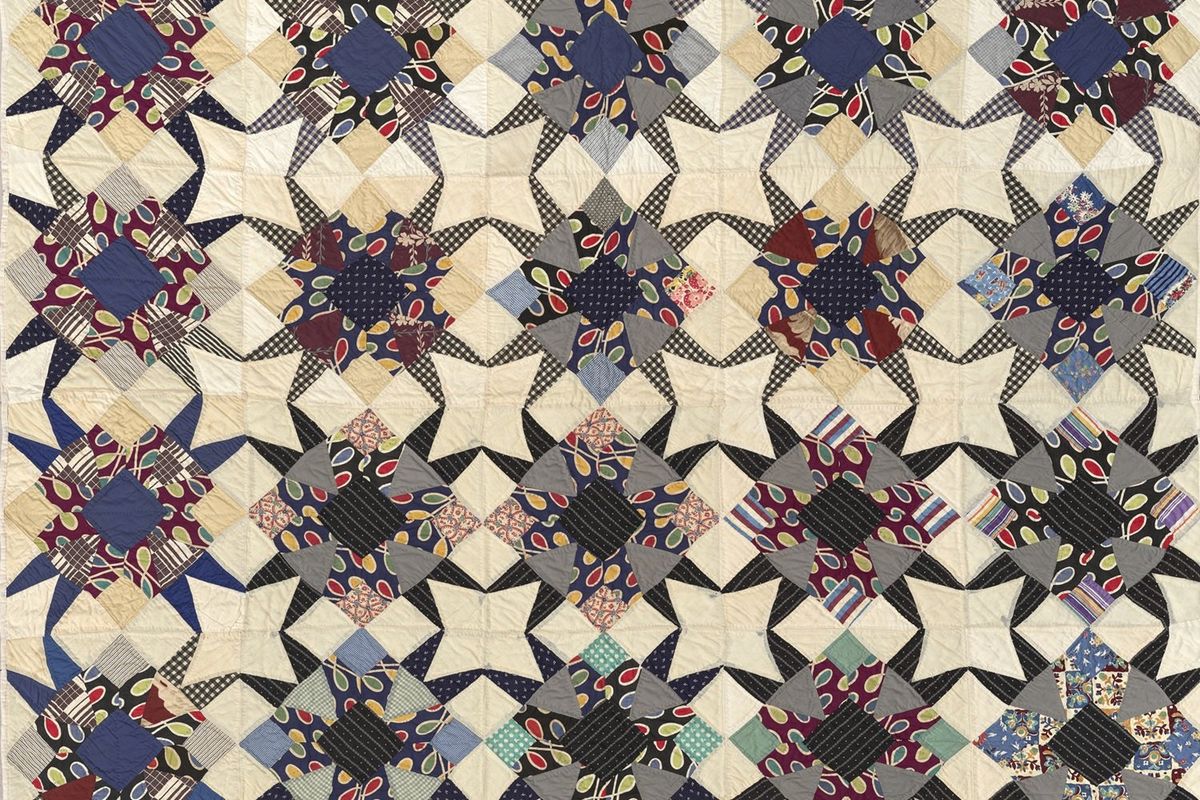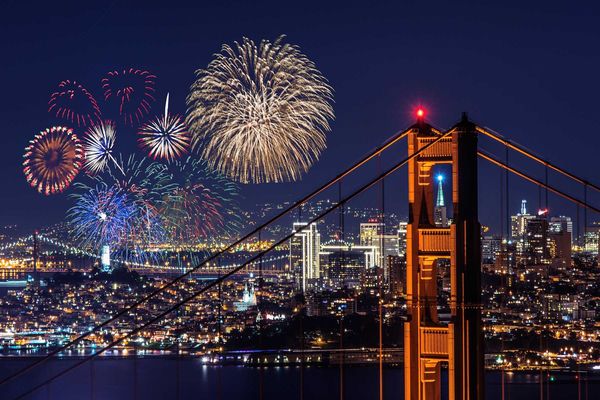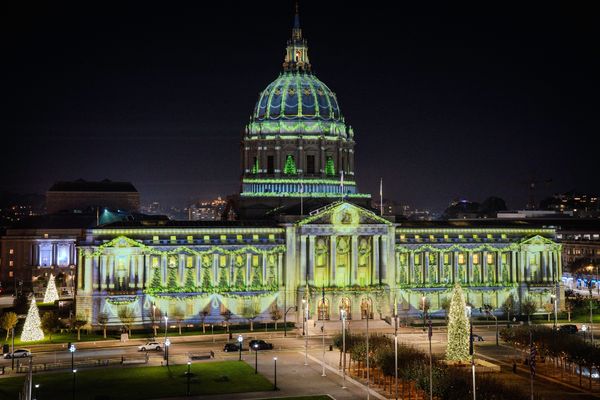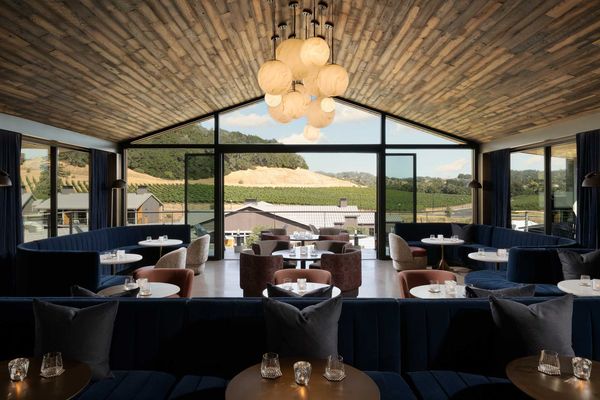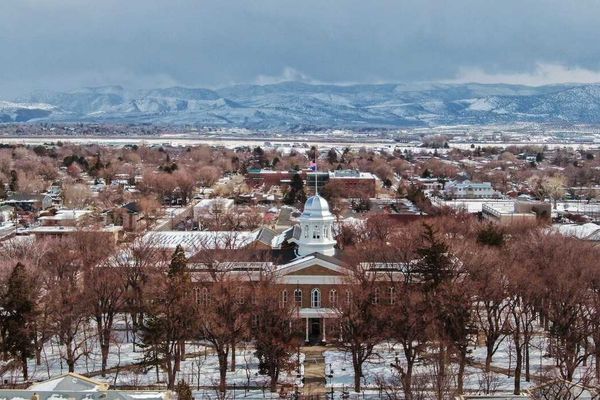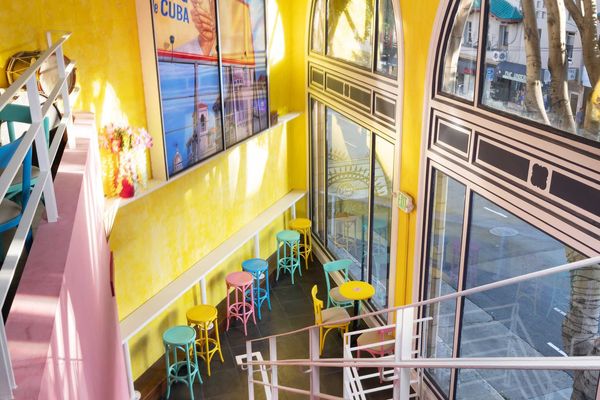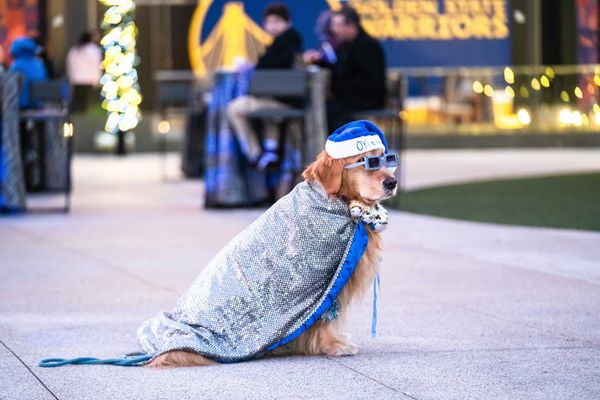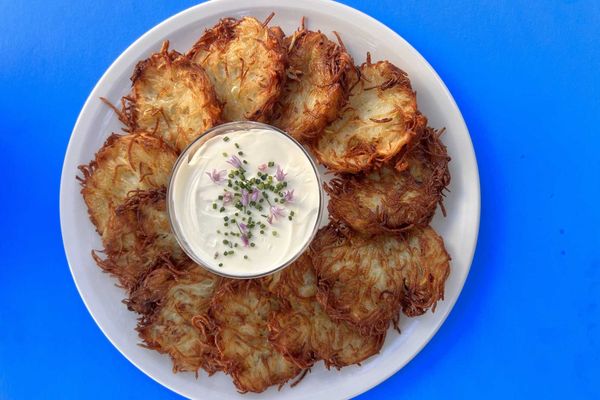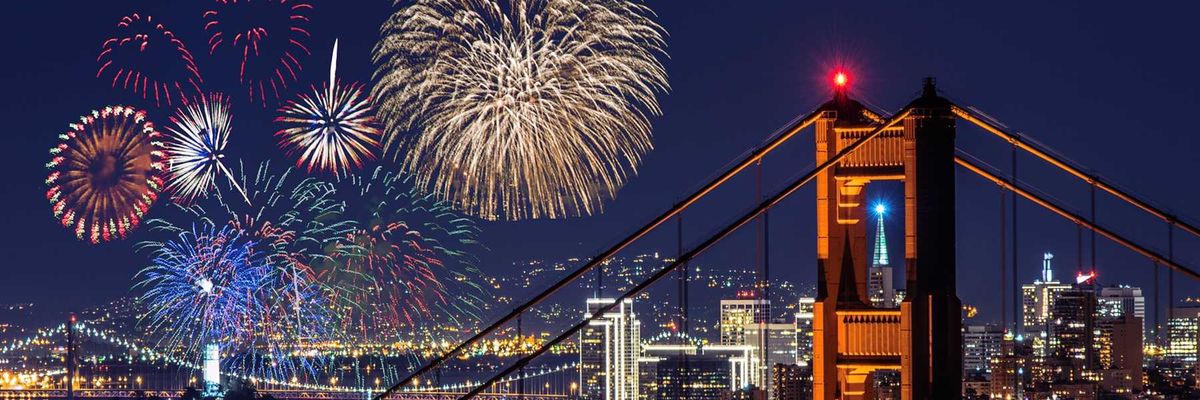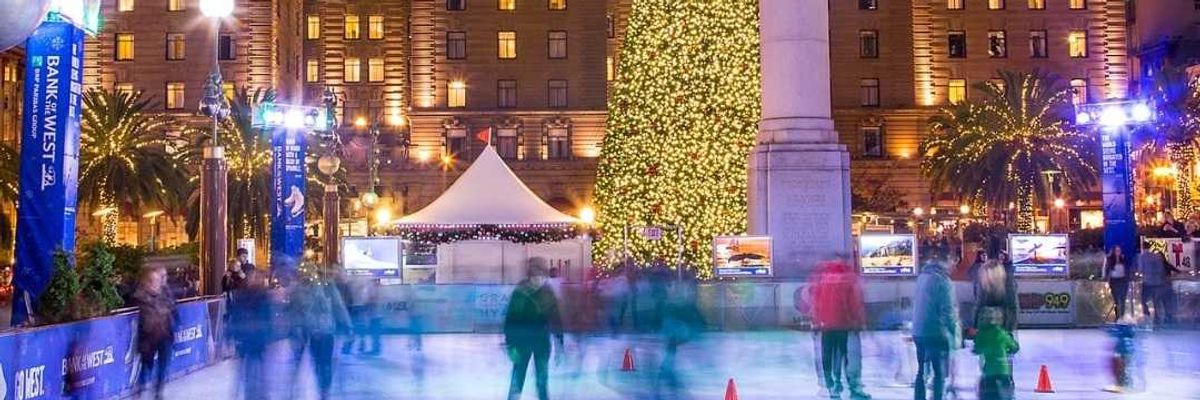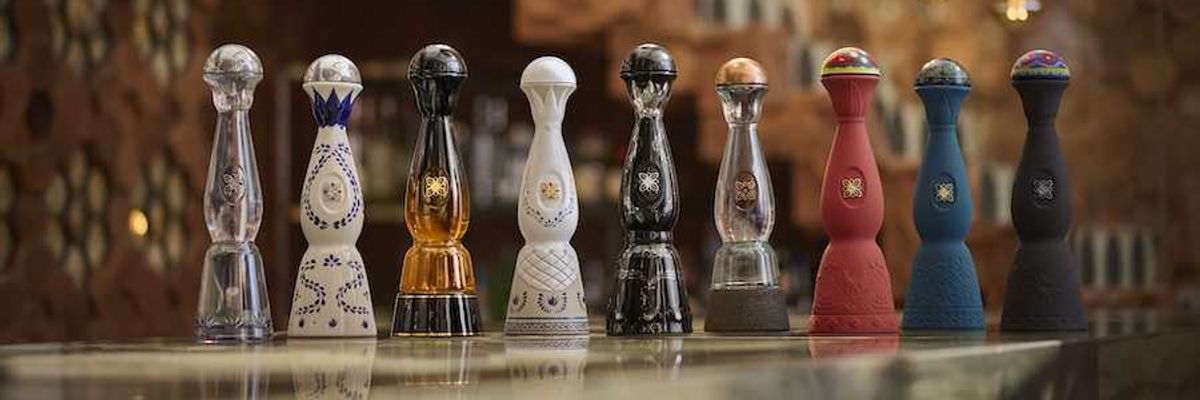Born into slavery in Georgia in 1854, Juneteenth gave Hattie Mitchell freedom but not an escape from domestic servitude.
In 1906, when Mitchell was in her early 50s, she accompanied the family of her employer—a prominent banker in Macon—to France. It wasn’t a vacation, not for Mitchell, who was likely on call from sunup to dark night.
But the transatlantic trip left an imprint on her memory. When they returned to the U.S., Mitchell began work on a quilt of repeating green and red botanical forms patterned after leaves she collected while abroad, embroidering the locations from which they’d come by tracing the handwriting of her employers with thread.
The quilt, which was brought to California in the 1930s, is the oldest one on display in Routed West: Twentieth Century African American Quilts, the new exhibition at the Berkeley Art Museum and Pacific Film Archive (BAMPFA). The collection—more than 100 quilts made by 90 Black artists over the last century—traces the flow of family, heritage, and tradition out of the South in the Second Great Migration.
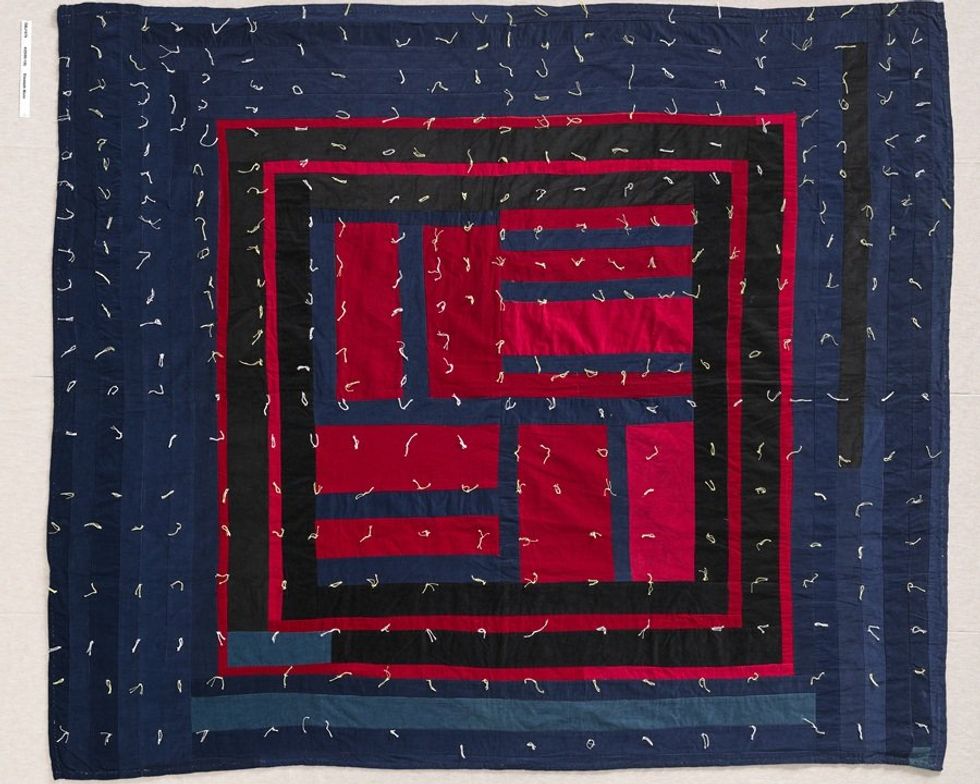
“The quilts on view in Routed West tell stories of resilience, collective care, and love spread across generations through the artistic language of quiltmaking,” says Dr. Elaine Yau, associate curator and academic liaison at BAMPFA. “They also tell a more specific story of migration—most of the quilting practices on display in the exhibition traveled with African American families from the South to the West Coast during the twentieth century, and those family histories of internal migration within the U.S. are woven into the works themselves, both figuratively and, in some cases, literally.”
Quiltmaking is deeply rooted in the African American history of enslavement and subjugation. Sewing and quilting, which were practiced in service of white employers, were also important to the self-sufficiency and survival of Black families and communities. Many of the quilts in the exhibition are improvised from salvaged fabrics and repurposed work clothes into objects of both physical comfort and of “emotional connection to places and people left behind,” says Yau.
Those on display vary widely in their patterns and materials. There are classic visual motifs like log cabins, Roman strips, half-square triangles, and ties. But there are more experimental or improvisational pieces, too: the quilt made entirely of men’s neckties by Gerstine Scott in 1989; the quilt shaped around a pair of white overalls, a trick of efficiency first practiced by maker Arbie Williams in a railroad workers’ camp in Beckville, Texas.
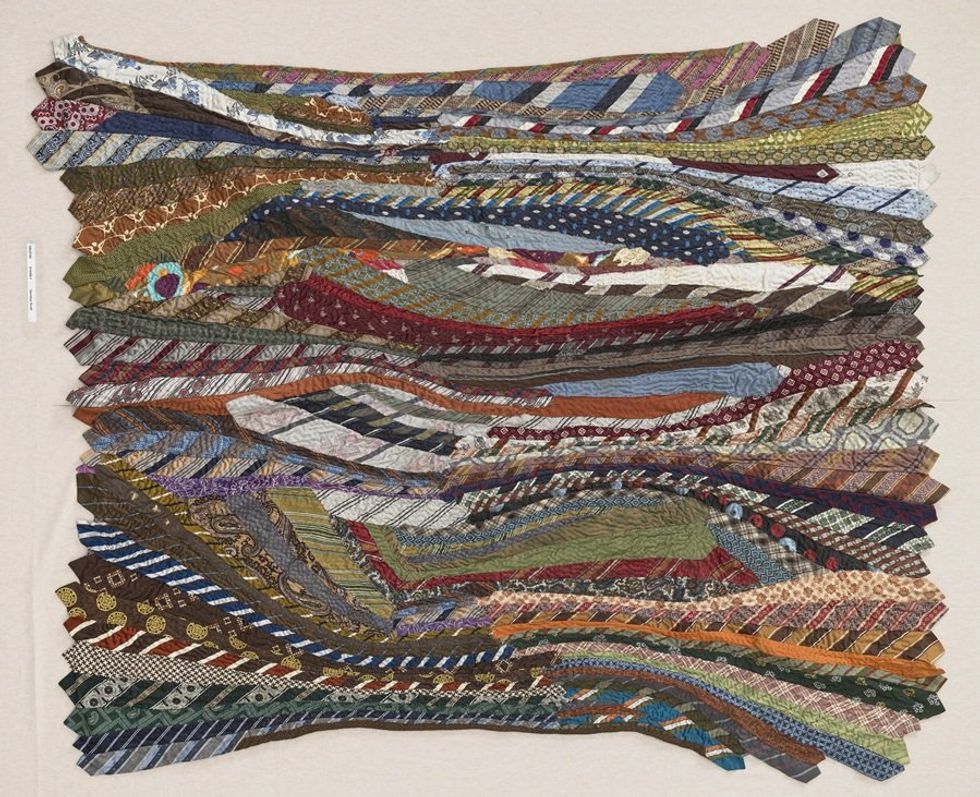
“Each artist and quilt has their unique approach by nature of the handmade quality of the artworks and individual tastes involved,” Yau explains. Her research into the history of the quilts—which were left to BAMPFA by collector and African textile advocate Eli Leon in 2019—gave her “a new appreciation for what a profoundly meaningful art form this is to Black families across the U.S. South—historically and in the present—and how deeply that culture has inflected Black life here in the Bay Area.”
One pair of quilts created by three generations of a family out of Louisiana, Yau finds especially moving. “Alice Neal, the youngest of the lineage, came to Oakland with her husband during the 1940s. She created a quilt that contains a portrait of her mother, Mary Bright, who was her quilt teacher. It's a magnificent summation of quiltmaking used to commemorate the life of a loved one.”
“On display next to it,” continues Yau, “is a quilt that Neal sewed together from a quilt top—the upper layer of a quilt—that her enslaved grandmother Jane Traylor made. This quilt top passed through a few hands in her family before it came to Neal. We know from oral history that Traylor never finished the quilt, believing it would be bad luck, and I suspect that Neal never totally finished quilting it in deference to this history,” she says—but she’ll never know for sure.

Although Yau and her team reached out to as many quiltmaker descendants as possible to fill in the collection’s historical and biographical details, many of the quilts in the show remain repositories of unanswered questions.
Quilts move forward through time in Routed West, from those salvaged and crafted piecemeal by hand to modern examples of what is very much a living tradition. The exhibition’s signature image, for example—a blue, orange, yellow, and red patchwork quilt made by Sherry Ann Byrd entitled Cultural Merger at Crossroads, USA—reframes minimalist fabrics by Finnish designer Marimekko through the generational quilting knowledge she learned from her grandmother, Gladys Henry.
Several of the quilts on display in the final gallery were made by members of the African American Quilt Guild of Oakland, one of around two dozen African American quilt guilds around the U.S. that have served as sites of community building, self-empowerment, and artistic growth since the 1980s. Riding High, one of a series commemorating the Oakland Black Cowboy Association’s annual parade and festival, was made by the guild’s former president, Marion Coleman, in 2013: a Black cowboy riding tall on a horse before a layered sky of African wax cloths, tie-dyed blues, and floral designs.
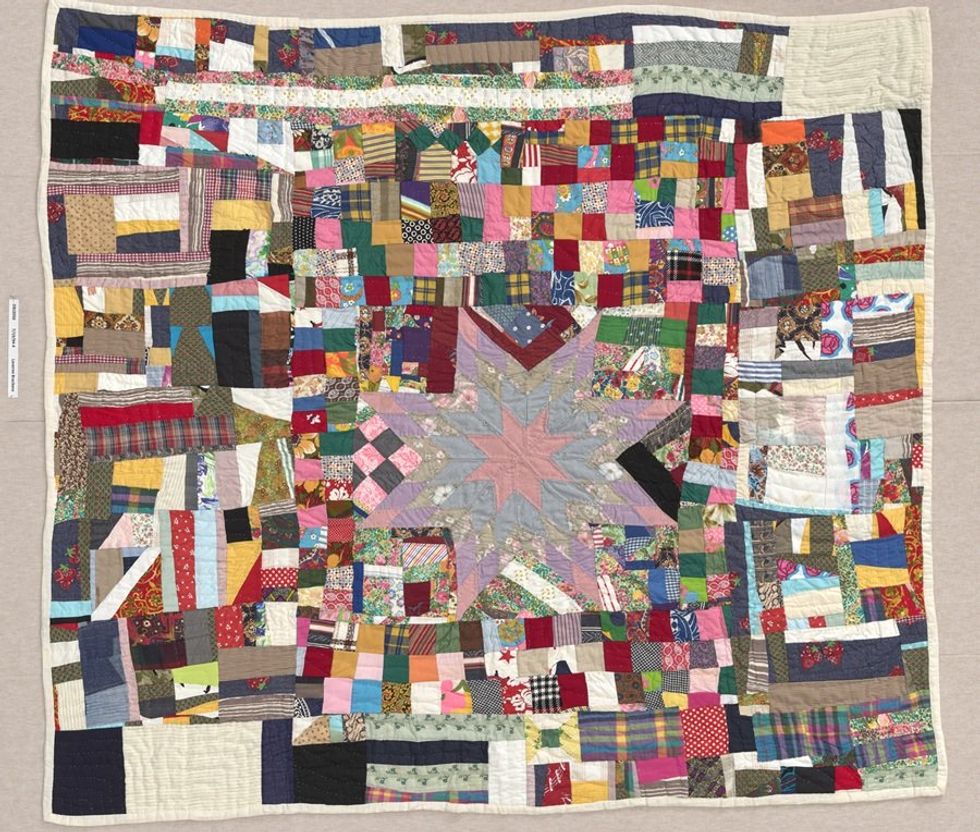
As a whole, Routed West makes clear the importance of African American quilts and quilting to historical and contemporary art. “We hope to give the medium more recognition and scholarly attention than [it has] historically received,” says Yau. “As a deeply rooted art form in the United States, quilts deserve this in-depth consideration.”
// Routed West: Twentieth-Century African American Quilts in California is open at BAMPFA Wednesdays through Sundays from 11am to 7pm through November 30th; 2155 Center St. (Berkeley), bampfa.org
If you know any of these artists and would like to share a story about them and/or their quilts, email bampfa@berkeley.edu.



